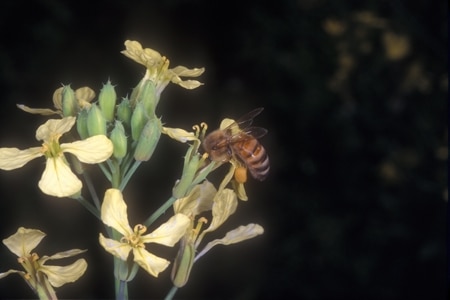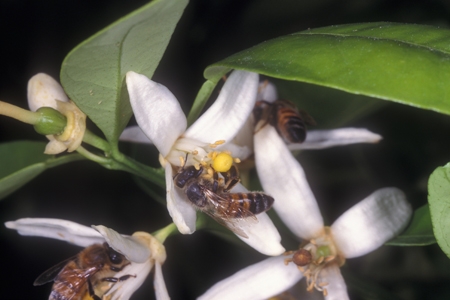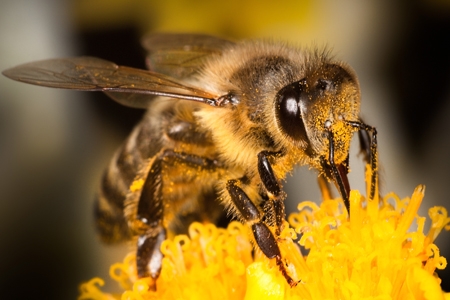Active Seasons




Honeybee Appearance and Size Facts
Western honeybees, or European Honeybees, with their distinctive colors ranging from yellow and black, showcase a rich diversity with 28 different types. Honeybees are frequently observed carrying pollen on their hind legs and are recognizable by their solid or striped abdomens, often encircled with opposing color bands. Measuring about half an inch in length, these remarkable insects can sting, leaving the stinger behind as it pulses venom into the victim.
We provide bee removal for honeybees in the following locations and their surrounding areas:

Behavior and Habitat of Honey Bees
Honeybees are highly social creatures with colonies that consist of a single queen, thousands of workers, and male drones. Perennial in nature, colonies survive for several years and reproduce through swarming in late spring or summer. Wild nests are typically found inside hollow trees, caves, or rock formations. In some instances, colonies may decide to nest within the confines of attics, crawl spaces, or wall voids in homes. Honeybees are a common sight in flowering gardens and are vital crop pollinators worldwide.

Signs of Infestation of Honey Bees
Honeybees see the whole world as their home. If they see a secure space to establish their hive, they will. So keep an eye out for honeybee hives in the wild, often located in tree holes or rock crevices. Occasionally, they may build nests in attics or chimneys. Hives hidden in these locations may leak honey or produce a droning buzz—both key indicators of a bee infestation.

Tips for Prevention of Honey Bees
Honeybees are not necessarily a bad bug to keep around. They can promote growth and biodiversity in your lawn or garden, so don’t get worried if you see a few buzzing around. However, if an entire colony has made their home in your attic, deck, or shed, they can become a major nuisance.
You can remove flowering plants from your property to dissuade bees from visiting. On top of that, make sure enclosed spaces are properly sealed to prevent a nest from forming. These steps can curb the presence of bees in your yard, but they’re not a guarantee to keep them away.
Getting Rid of Honeybees
Honeybees are very important to our ecosystem. However, depending on where they nest, they can be a major pest and health hazard. Given the complexity of large honeybee colonies and the potential mess associated with nest removal, professional intervention is crucial. In addition, honeybees can sometimes be an Africanized strain that is more aggressive and cause a public hazard. In these instances, it is important to consult a professional pest control company like Hulett Environmental Services to help avoid being stung. If stung, remember to remove the stinger using a flat, hard object and seek medical advice promptly.
Effective Honeybee Control Solutions
Protect your home and the environment by choosing Hulett Environmental Services for comprehensive honeybee solutions. With our experience and commitment to eco-friendly pest management, we ensure an eco-conscious and effective approach to address honeybee infestations in southern Florida. So if you have a honeybee problem in your home, start with a free inspection or just call Hulett.




